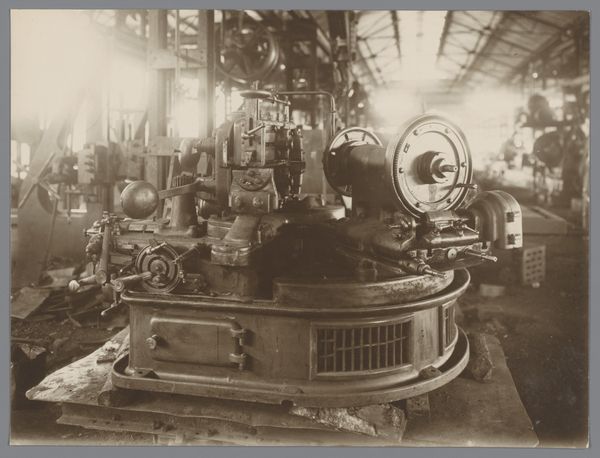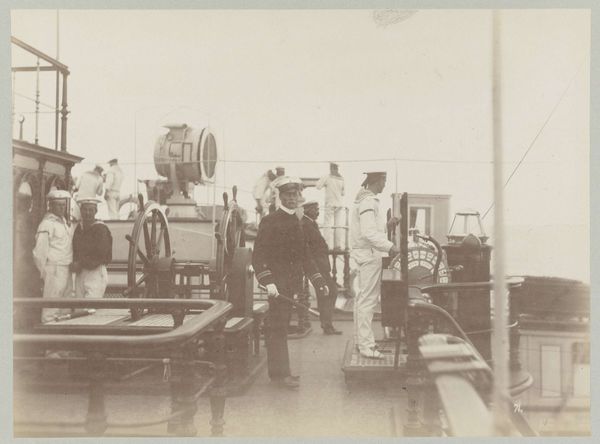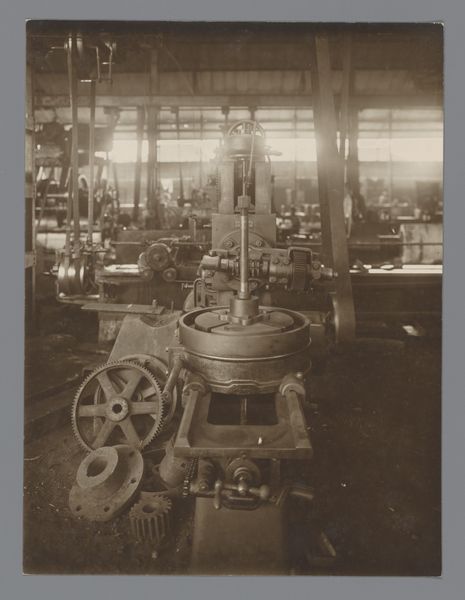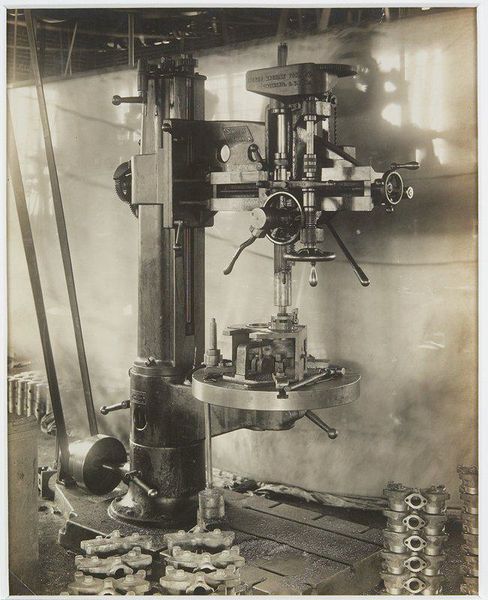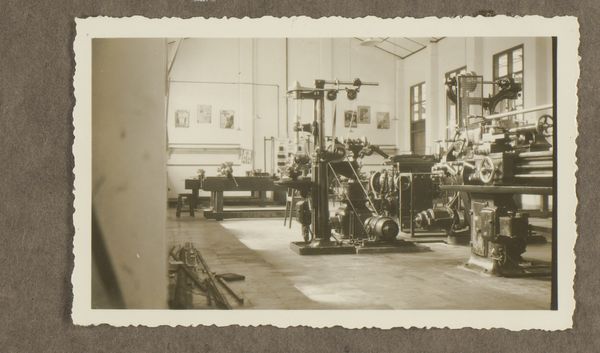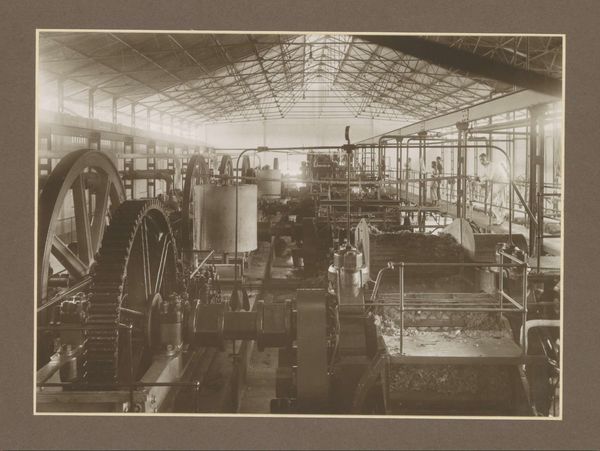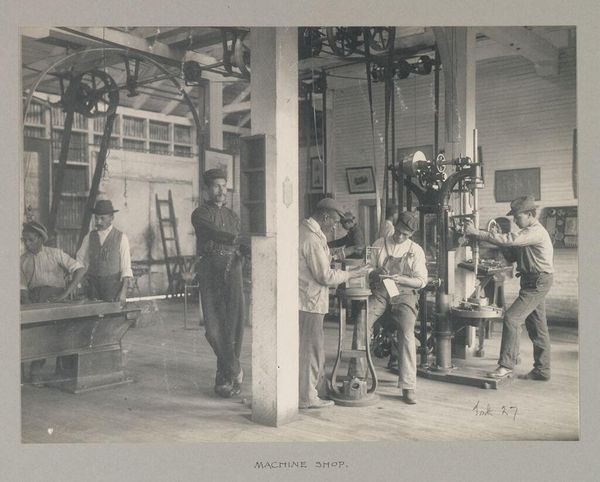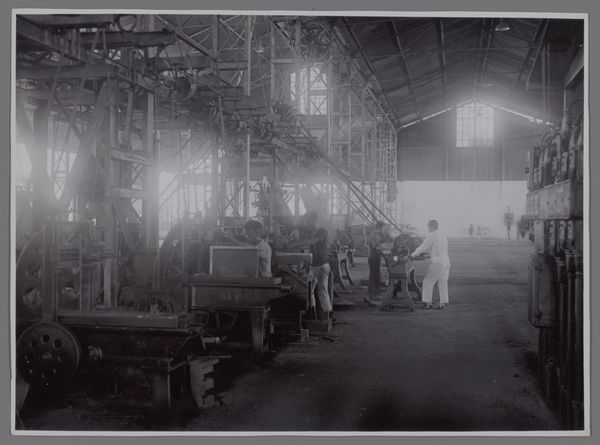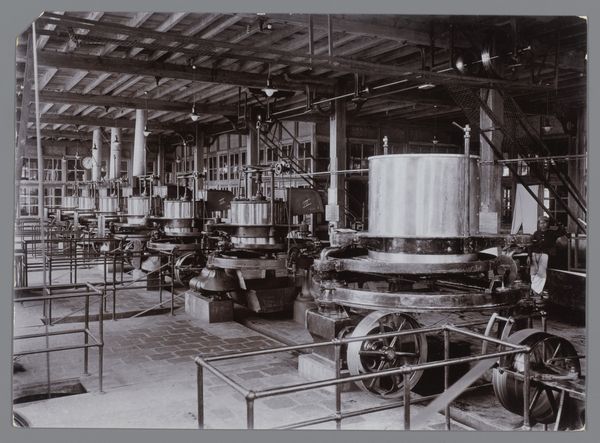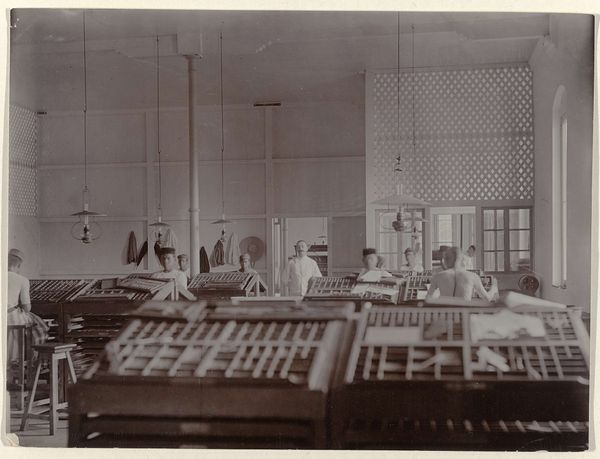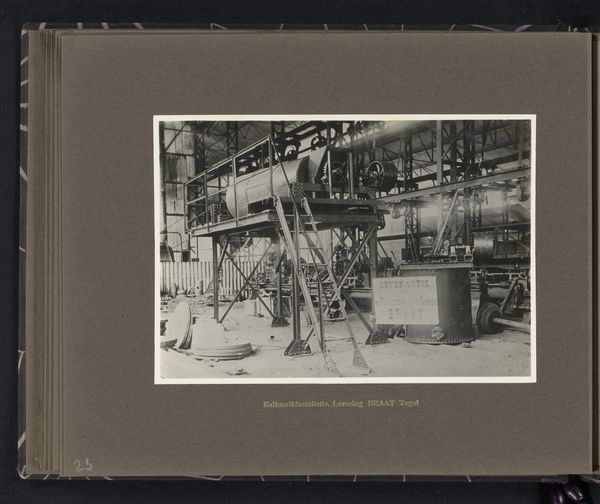
photography, gelatin-silver-print
#
still-life-photography
#
paper non-digital material
#
photography
#
gelatin-silver-print
#
paper medium
#
realism
Dimensions: height 150 mm, width 101 mm
Copyright: Rijks Museum: Open Domain
Curator: Looking at "Le chantier de Tirage, Mise en bouteilles," a gelatin silver print made sometime between 1930 and 1960 by Helio-Cachan, I'm immediately struck by the density of detail and the composition's recession into space. Editor: The repetition of figures and machinery produces a rhythmic effect that is slightly unsettling. Each worker, a module within the larger bottling mechanism, speaks to standardization, almost to the exclusion of the human element. Curator: The scene presents a compelling tension between mass production and human labor. Note the repetitive poses of the workers, mirroring the industrial setting, yet they're arranged almost in tiers, suggesting a social hierarchy embedded within this machinery. One could see echoes of older workshop traditions giving way to mechanization here, or perhaps finding a curious integration. Editor: I see the semiotics of labor writ large here, literally! White smocks connote cleanliness and purity, certainly an idealized vision of what I presume is a factory, given its subject. Yet the photograph is muted, its gray tones flattening perspective and creating an overall pall. This creates a strong binary. Curator: Do you find the photograph’s almost documentary aesthetic lends a particular weight to that contrast, perhaps inviting reflection on the promises and realities of industrial progress? It’s also quite a detailed record of the era's clothing, the style of hats worn, capturing moments in a way that creates memory. Editor: The framing is strategic—a wide, almost panoramic shot highlighting not individual experiences, but an expansive view of collective endeavor, making me think of similar utopian ideologies common at that time. Its formal elements underscore the subordination of the self to the collective project. What persists is that pervasive industrial vision. Curator: The image serves as a poignant symbol, then, not simply of production, but of an era defined by mechanization and social organization and human endurance. The composition compels us to examine not just the ‘what’ but the ‘why’ and the ‘how’ of progress. Editor: Precisely, and unpacking such meanings, layered within the very fabric of the print, becomes the lasting effect of engagement.
Comments
No comments
Be the first to comment and join the conversation on the ultimate creative platform.

